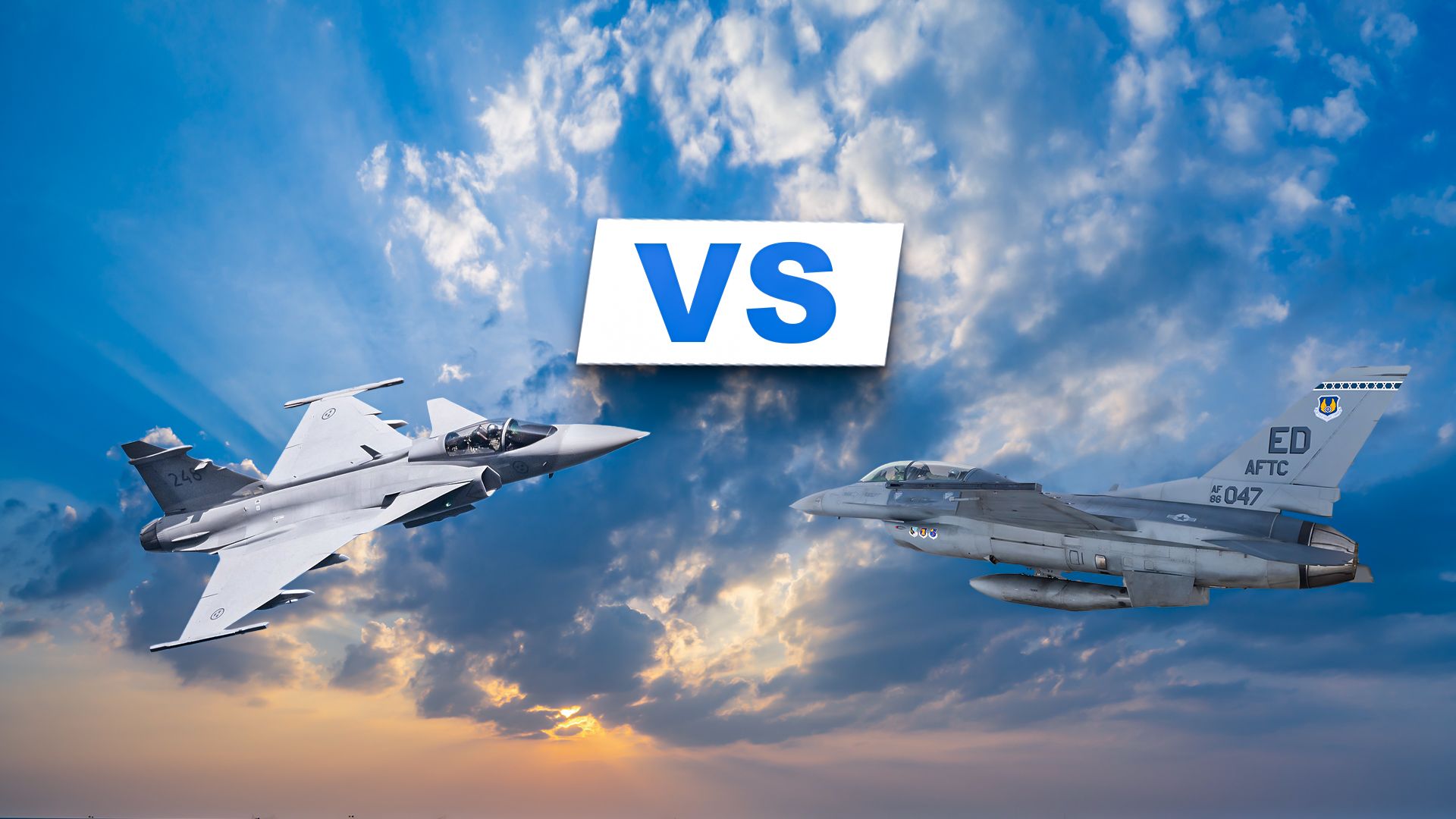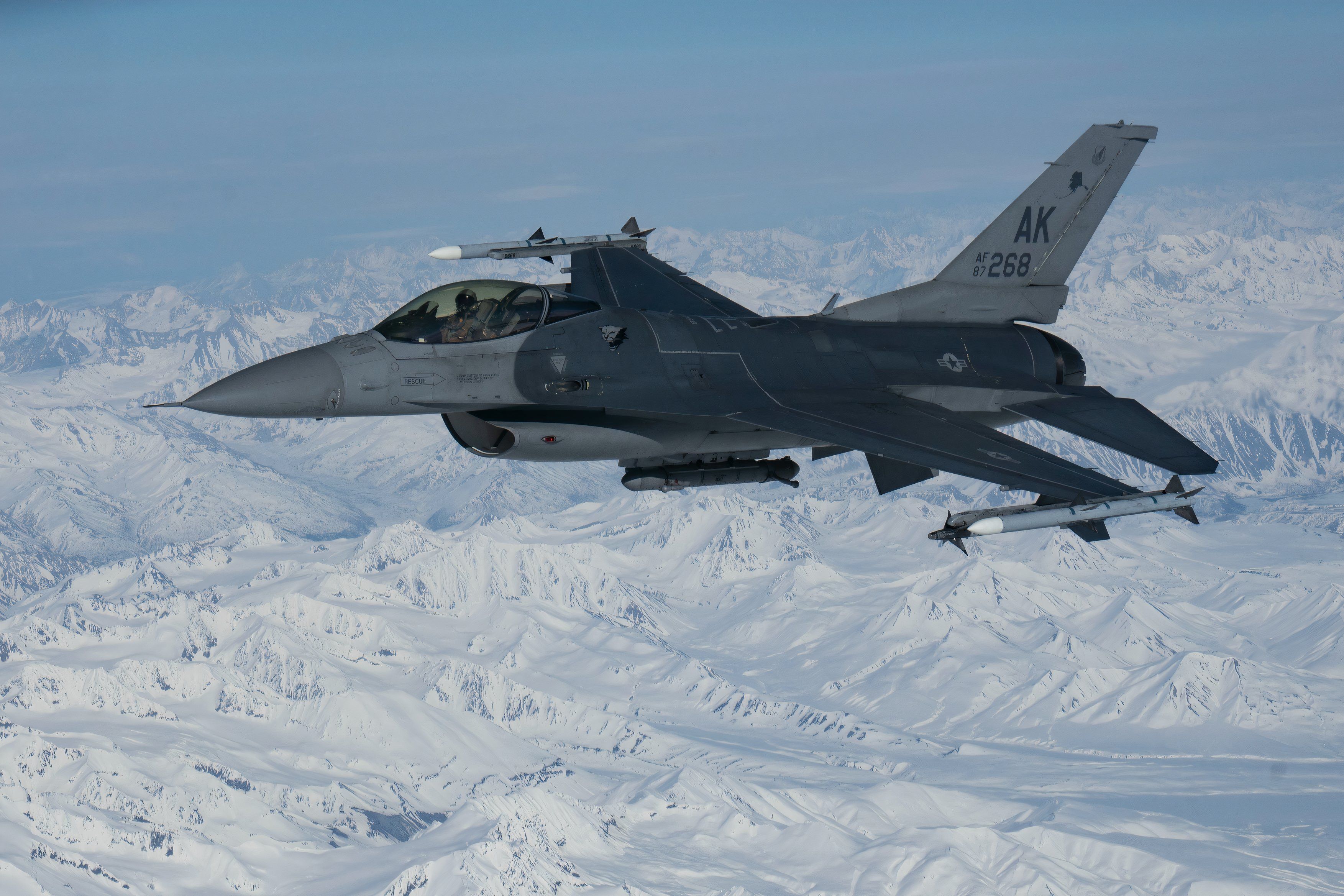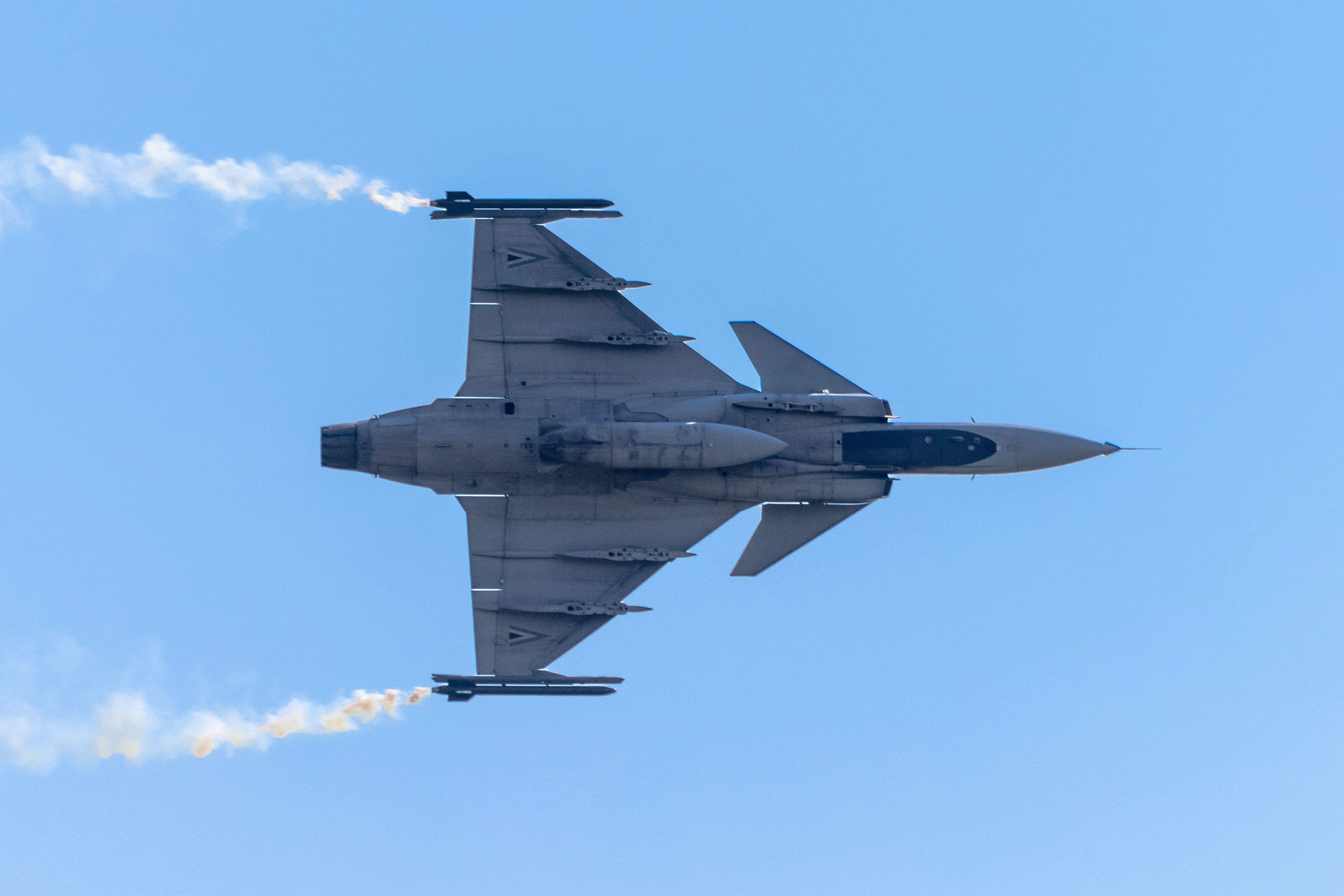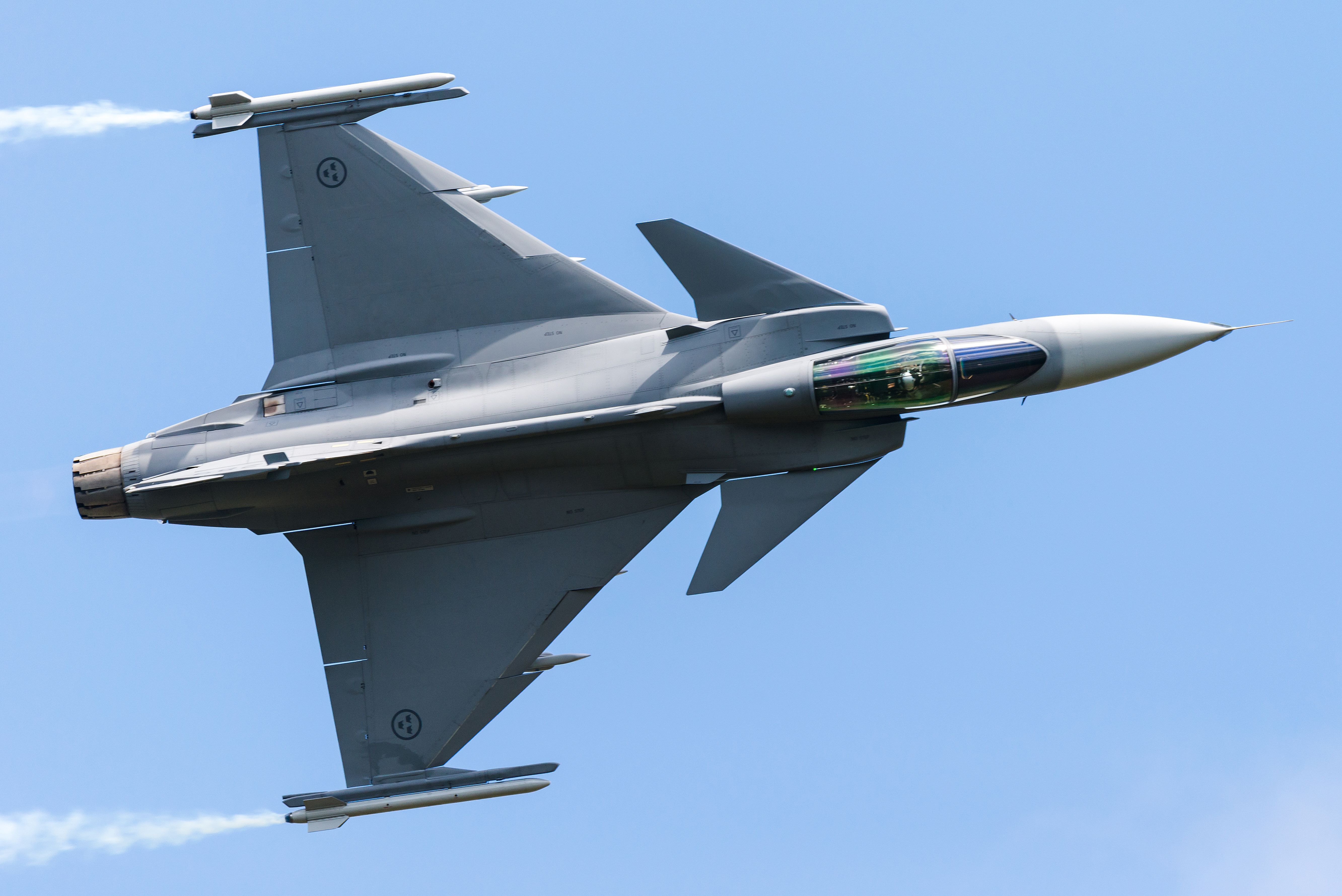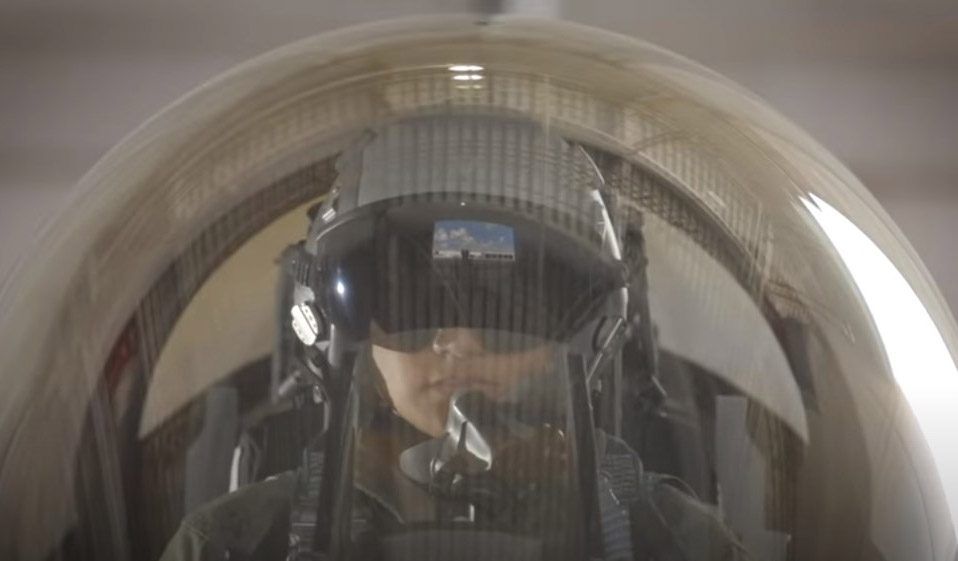Summary
- The F-16 Block 70/72 and Saab Gripen E are modern, NATO-compatible 4.5th-gen fighters.
- The Gripen is built for ease of maintenance, extreme climates, and dispersed runways.
- Countries with F-16s benefit from existing infrastructure, parts, and support compared to the Gripen.
The F-16 Fighting Falcon is one of the most successful fourth-generation fighter jets ever made. While it is an older jet than the Saab JAS 39 Gripen (it first flew in 1974 while the Gripen flew in 1988), it has been continuously updated. The F-16 Block 70/72 has little in common with the first Falcons besides its external appearance. The Swedish Gripen E is considered a great fighter jet in its intended role and regularly competes with the F-16, Euro Fighter Typhoon, and Mirage when air forces select a new jet.
Saab Gripen: a Swedish Fighting Falcon
The Saab Gripen E and the F-16 Block 70/72 are great jets. They are both 4.5th-generation fighters compatible with a wide range of NATO standard air-delivered weapons. Both jets are contemporary, smaller, single-engine, multi-role fighters capable of carrying out various missions (the Gripen is also equipped with powerful electronic warfare capabilities).
Photo: USAF
The Gripen first entered service in 1996 and was designed to meet the Swedish requirement for a light, maneuverable, easy-to-maintain, and cost-efficient multi-role fighter. Overall, it is not as large or capable as the F-16 Block 70/72, but it has tricks up its sleeves that make it attractive to the right buyers. According to the Kyiv Post, it is considered less sophisticated than the F-16 and relatively cheap and easy to maintain.
While most fighter aircraft have at least some foreign components, the Saab Gripen is bursting with foreign components from many Western countries. A very large share of the components are made in the United Kingdom. It is powered by the Reaktionsmotor 12 turbofan jet engine produced by Saab. However, it is a version of the General Electric F404 produced under license in Sweden. A cynic could ask just how Swedish the Swedish Gripen really is.
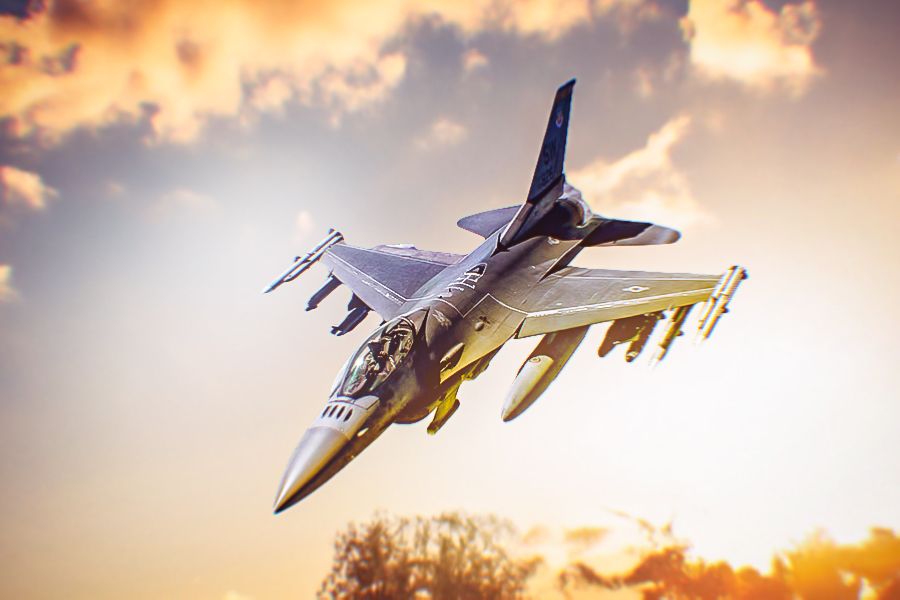
Related
Comparative Analysis: F-16 Block 70 Vs. Other 4th Generation Fighters
F-16 Block 70/72 continue to be produced for air forces around the world and are considered advanced 4.5 generation fighters.
Designed for different wars
For around 250 years, Sweden was a neutral country (that changed in 2024 when it joined NATO). This forced Sweden to pursue a more independent military strategy, and the Gripen was a core part of that strategy.
Photo: Steam Visuals | Shutterstock
Sweden envisioned a war in which it would have to disperse its air force, so the Gripen was built as a rugged machine that could operate on unprepared runways and highways. This made the jet easier to hide and more survivable on the ground for countries fighting at a disadvantage (as in the case of Ukraine fighting Russia).
In short, the Gripen was built for a very different war than what the US Air Force sees itself fighting. The United States, by contrast, has had the luxury of designing its aircraft on the assumption it would enjoy air superiority or air dominance in any fight. It can assume its jets will operate out of prepared runways with full logistical support.
|
F-16 Fighting Falcon |
Saab Gripen |
|
|---|---|---|
|
Engine: |
Pratt & Whitney F100-PW-229EEP turbofan |
GE F414G engine |
|
Service Ceiling: |
50,000 feet |
50,000 feet |
|
Max take-off weight: |
42,300 lbs |
30,865 lbs |
|
Empty weight: |
18,900 lbs |
14,991 lbs |
|
Mach air speed: |
Mach 2.05 |
Mach 2 |
As Saab states,
“From the outset, Gripen E was designed for ease of maintenance that secures higher availability than its competitors. Gripen E can operate in extreme climates and from dispersed and unprepared road bases or airstrips.”
Saab also states it takes less than 20 minutes, and only a limited number of ground crew and equipment are needed to refuel and rearm it for the next air-to-air mission. The Gripen E has been built to enjoy low maintenance so that it can get back into the fight.
Photo: BeAvPhoto | Shutterstock
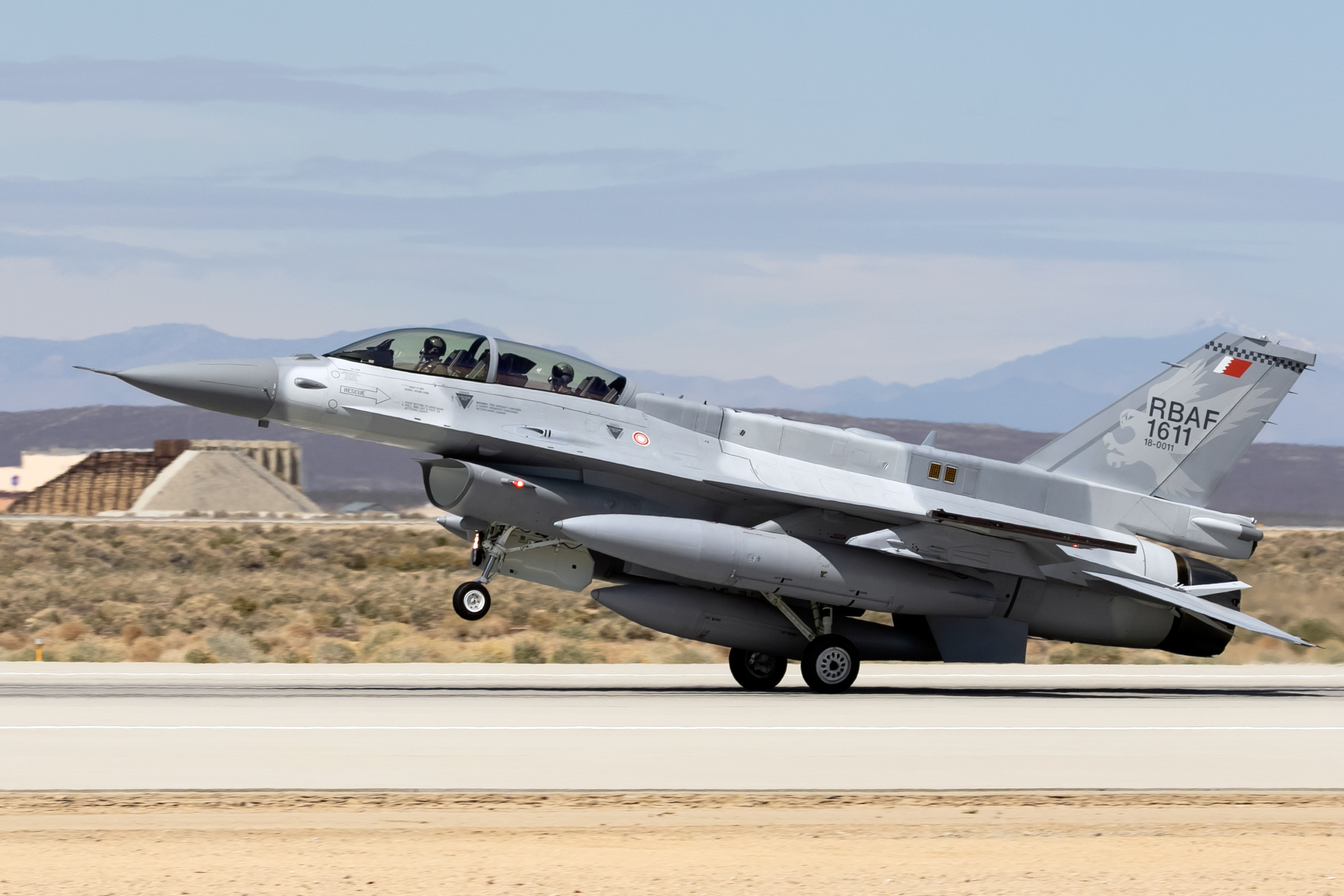
Related
5 Features That Make The Lockheed Martin F-16 Block 70 The Ultimate Viper
The Block 70 model is expected to serve global air forces for at least another four decades.
The benefit of scale
Purchasing fighter jets is a very complicated transaction. It involves a marriage of sorts with the nation supplying those jets. Most countries will be unable to sustain them and will need continual assistance or at least a long transitional time to train the pilots and the maintainers.
|
F-16 Fighting Falcon |
Saab Gripen |
|
|---|---|---|
|
Number in service: |
1,017 (2021) |
71 (more on order or in storage) |
|
Production status: |
Block 70/72 in production (export only) |
in production |
|
Operators: |
approx. 31 (including former and future operators) |
6 (Sweden, Brazil, Hungary, Czech Republic, South Africa, Thailand) |
|
Total produced: |
over 4,500 |
approx. 300 |
|
Retired/retiring: |
thousands |
perhaps none (older Gripen C/D fighters are not expected to retire until 2035-2040) |
The F-16 has been used for so long by so many air forces, and many of those air forces are now retiring those jets. This means there is a massive amount of know-how, maintainers, spare parts, and other infrastructure around to support the jets. While a number of countries are purchasing the Gripen, the level of existing infrastructure support will likely never rival that of the Falcon.
Photo: Lockheed Martin
The Brazilian Air Force has ordered (and is receiving) around 40 Saab Gripens and was expected to order another 36. However, according to reports, Brazil now plans to order second-hand F-16s. These will be much cheaper than the new Gripens and will likely be able to be delivered sooner.

